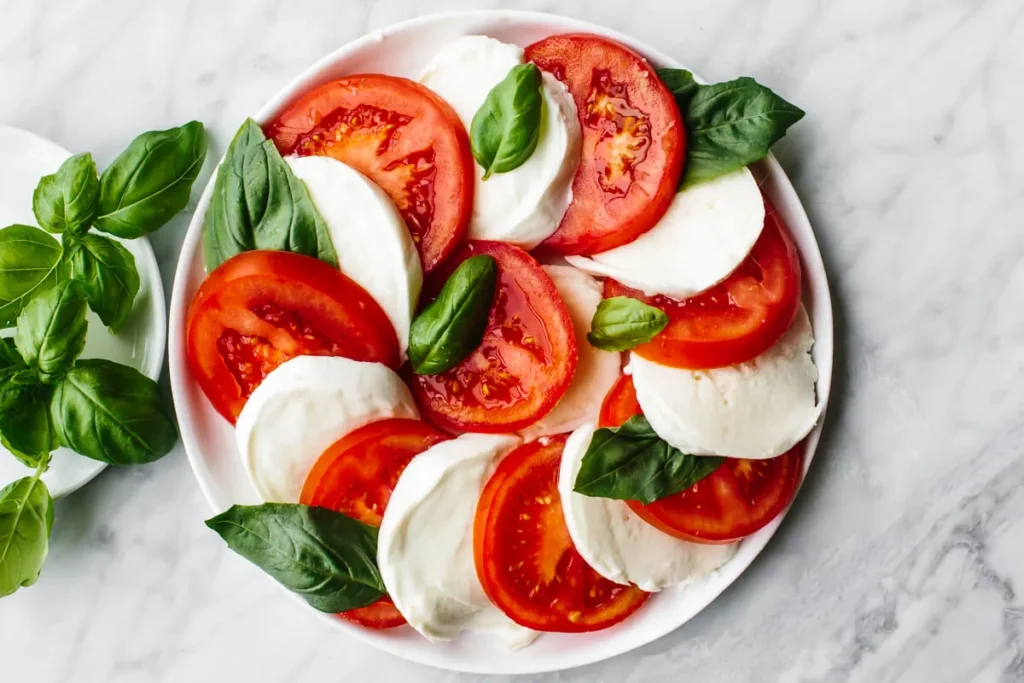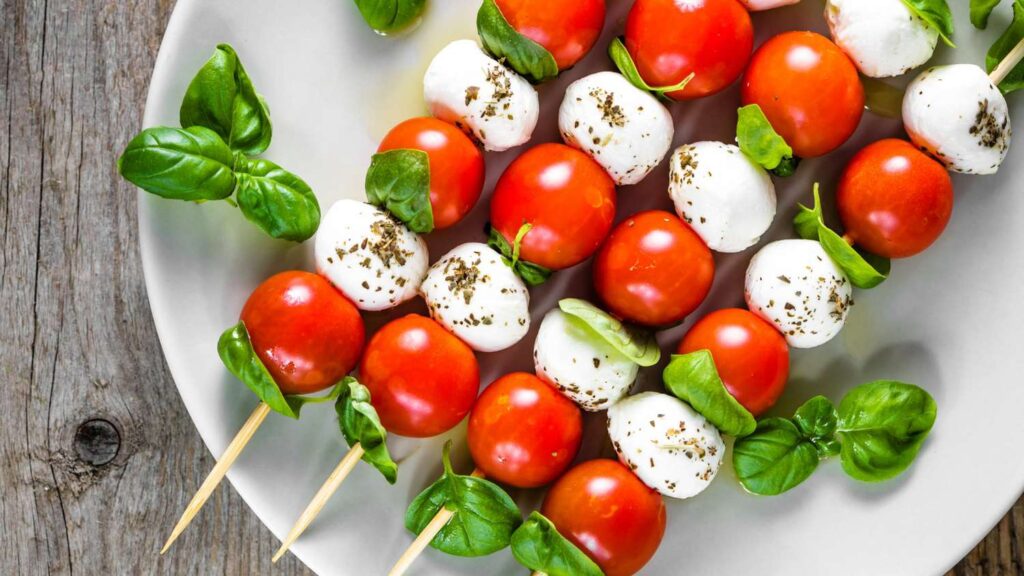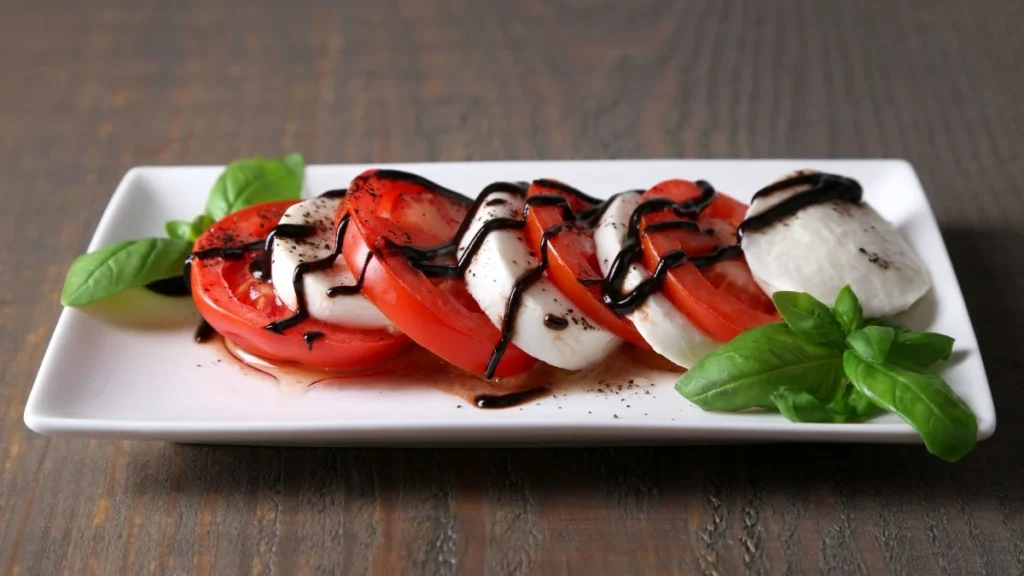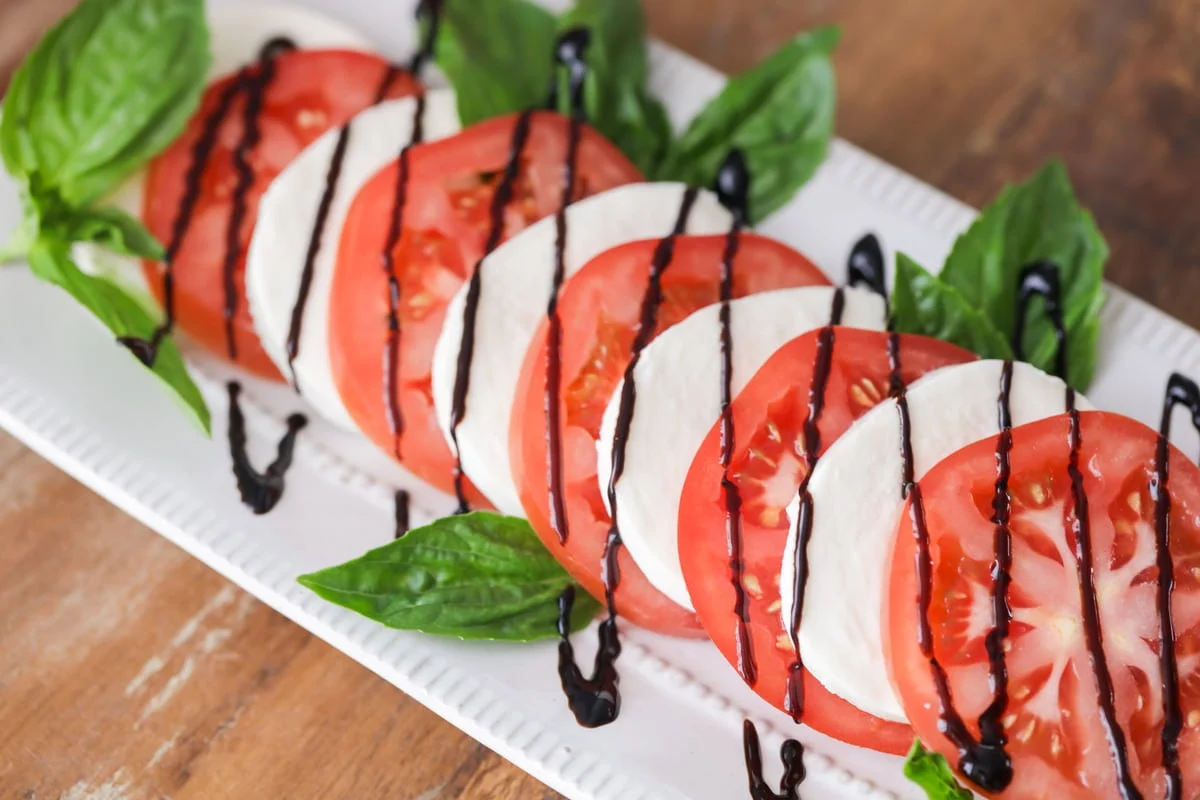Caprese salad is a delightful and refreshing dish that embodies the essence of summer with its vibrant colors and fresh flavors.
Originating from the Campania region of Italy, this simple yet elegant salad has gained worldwide popularity for its combination of juicy tomatoes, creamy mozzarella, fragrant basil, and tangy balsamic glaze.
In this article, we’ll delve into the art of crafting the perfect Caprese salad, exploring its history, ingredients, preparation methods, and tips for enhancing its taste.
Get ready to indulge in a symphony of flavors that will transport you to the sunny shores of the Mediterranean.

The Origins of Caprese Salad
The roots of Caprese salad trace back to the island of Capri, nestled in the azure waters of the Tyrrhenian Sea.
Legend has it that this iconic dish was first created in the 1950s at the Trattoria da Vincenzo for visiting celebrities seeking a taste of authentic Italian cuisine.
Named after the island itself, Caprese salad pays homage to the bountiful harvests of tomatoes and basil that flourish in the region’s fertile soil, coupled with the creamy goodness of buffalo mozzarella sourced from local dairy farms.
Ingredients for Caprese Salad
Tomatoes: Choose ripe, juicy tomatoes bursting with flavor. Opt for heirloom varieties like beefsteak, Roma, or cherry tomatoes for a colorful twist.
Mozzarella: Authentic Caprese salad calls for fresh buffalo mozzarella, prized for its soft texture and milky taste. Alternatively, you can use cow’s milk mozzarella for a milder flavor.
Basil: Fresh basil leaves add a fragrant herbal note to the salad. Pluck them straight from the stem and tear them gently to release their aroma.
Extra Virgin Olive Oil: Drizzle high-quality extra virgin olive oil over the salad to enhance its richness and add a subtle fruity flavor.
Balsamic Glaze: A drizzle of balsamic glaze provides the perfect balance of sweetness and acidity, elevating the flavors of the salad.

Preparation Method
Slice the Tomatoes: Cut the tomatoes into thick slices or halved cherry tomatoes for bite-sized pieces.
Slice the Mozzarella: Slice the mozzarella into rounds of equal thickness, ensuring each bite offers a perfect combination of tomato and cheese.
Layer the Salad: Arrange the tomato and mozzarella slices alternately on a serving platter, overlapping them slightly to create an eye-catching pattern.
Add Basil Leaves: Tuck fresh basil leaves between the tomato and mozzarella slices, scattering them evenly across the platter.
Drizzle with Olive Oil: Drizzle extra virgin olive oil over the salad, allowing it to seep into the layers and infuse them with its luscious flavor.
Drizzle with Balsamic Glaze: Finish off the salad with a generous drizzle of balsamic glaze, creating a tantalizing swirl of sweetness on top.
Tips for Enhancing Flavor
Season with Salt and Pepper: Sprinkle a pinch of sea salt and freshly ground black pepper over the salad to intensify its flavors.
Add a Twist with Pesto: For a creative twist, substitute basil leaves with dollops of homemade or store-bought pesto sauce.
Incorporate Fresh Produce: Experiment with additional ingredients such as ripe avocados, sweet peaches, or tangy strawberries to add depth to the salad.
Grill the Ingredients: Take your Caprese salad to the next level by grilling the tomatoes and mozzarella for a smoky charred flavor.
Serve with Crusty Bread: Accompany the salad with slices of crusty Italian bread or toasted ciabatta to soak up the flavorful juices.
Conclusion
In conclusion, Caprese salad stands as a timeless classic that celebrates the bounty of summer’s harvest in a simple yet sophisticated manner.
With its vibrant colors, fresh ingredients, and harmonious flavors, it’s no wonder that this Italian masterpiece has captured the hearts and taste buds of food enthusiasts around the globe.
Whether enjoyed as a light appetizer, a refreshing side dish, or a wholesome meal on its own, Caprese salad epitomizes the essence of la dolce vita – the sweet life.

FAQs (Frequently Asked Questions)
Can I use dried basil instead of fresh basil for Caprese salad?
While fresh basil is preferred for its vibrant flavor and aroma, you can use dried basil as a substitute if fresh basil is unavailable.
However, adjust the quantity accordingly, as dried basil tends to have a more concentrated flavor.
What type of tomatoes should I use for Caprese salad?
Choose ripe, flavorful tomatoes such as beefsteak, Roma, or heirloom varieties for the best results.
If cherry tomatoes are preferred, opt for plump and juicy ones for a burst of sweetness in every bite.
Is buffalo mozzarella necessary for Caprese salad?
While buffalo mozzarella is traditional and adds a unique creaminess to the salad, you can use cow’s milk mozzarella as a substitute if buffalo mozzarella is not available.
Look for fresh, high-quality mozzarella for the best taste and texture.
Can I make Caprese salad ahead of time?
While Caprese salad is best enjoyed fresh to preserve its vibrant flavors and textures, you can prepare the ingredients ahead of time and assemble the salad just before serving.
Keep the sliced tomatoes and mozzarella refrigerated separately to prevent them from becoming soggy.
How long does Caprese salad last in the refrigerator?
Caprese salad is best consumed immediately after preparation to enjoy its fresh flavors to the fullest.
However, if stored properly in an airtight container in the refrigerator, it can be kept for up to one day.
Remember to bring it to room temperature before serving for the best taste and texture.
